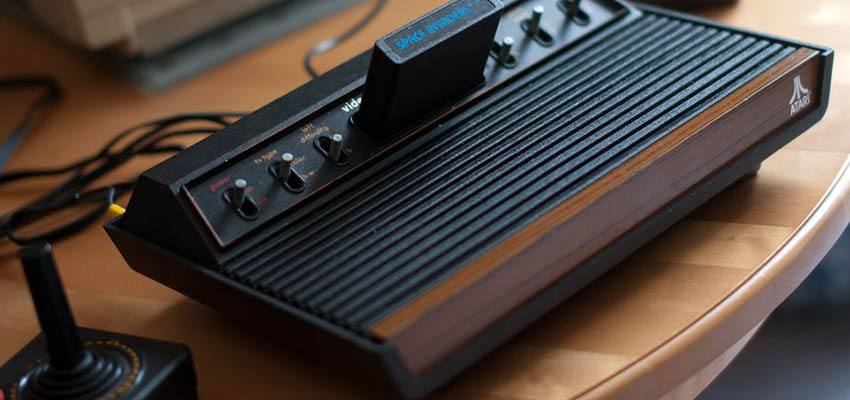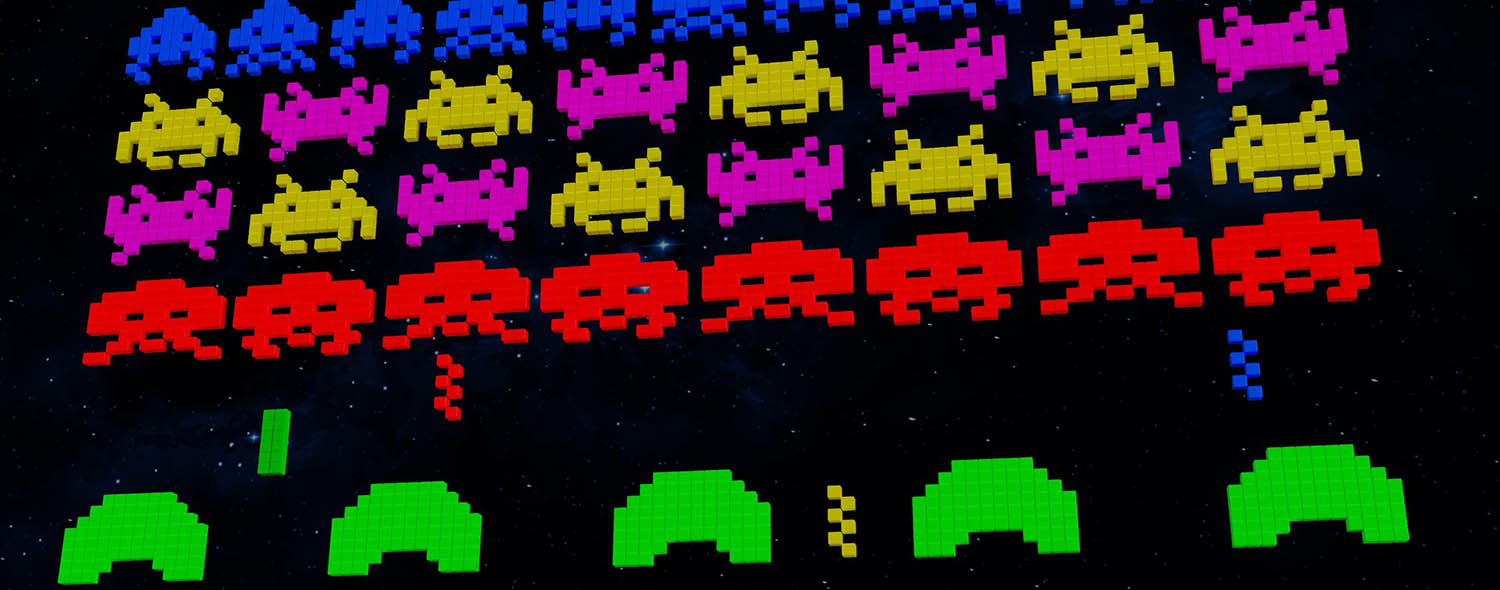In order to properly appreciate the present, one must know the past. Different philosophers have derived this maxim on different occasions and with different words over the centuries from Socrates to Paisius of Hilendar. And since it’s so popular, there’s obviously at least a dose of truth in it, isn’t there? In this articlel, we will take you into the depths of a story that often stays out of the public eye that of video games. Are you ready? Let’s start! One learns most easily while playing.
Most games over the centuries have been designed to develop the thinking, physical endurance and reflexes of humanity from chess as old as the world, to throwing logs in Scotland, to tennis and football. How are their electronic counterparts different? In fact, not at all, despite the claims of groups of politicians and public “activists”. Does a StarCraft match require less thought than moving Persian figurines to the black and white board?
Are the reflexes of professional tennis players faster and more responsive than those of Counter-Strike champions? And if you’ve ever touched the Wii, you know how physically demanding it is to play a virtual boxing match and how many towels you need to soak up the real sweat on the floor.
The Beginning
Of course, things were not always at such a high level. Everything has a beginning and in the case of modern gaming, it is in 1958. By this time, computers have been upgraded to the point where they do not occupy entire halls, but only one or two normal rooms. During this 20-year evolution, there have been many successful attempts to create programs and devices that use the power of computers for entertainment.
However, most of them are based on text and analog lamps, which is why we will not dwell on them. In the aforementioned 1958, scientist Willie Higginbotham used an oscilloscope, a device designed to visualize changes in electrical voltage over a period of time to show a game of tennis. Although quite primitive and dismantled two years later,
However, there is still a long way to go to reach it. In 1960, a group of students from the Massachusetts Institute of Technology for the first time managed to get a computer system to visualize an interactive image their game-program is called Spacewar! and became quite popular among universities in the United States in the following years.
Thanks to the BASIC programming language created two years later, many computer science students began writing games, and within a few years the logic behind electronic entertainment became part of their academic program. In 1966, while waiting for a friend at a bus stop in New York, military engineer Ralph Bayer invented a way to transfer computer games to the television screen. In early September of that year, he patented his idea,
The first of these was the work of Bayer in 1968 he completed the prototype, known as the “brown box” and released on the American market four years later under the name Magnavox Odyssey.
Although the machine’s capabilities are limited to moving two glowing white pixels on a black screen, Bayer is figuring out how to diversify the game through printed plastic plates that attach to the TV screen thanks to static electricity and take on the role of a playing field. Baer also created the first commercial “light rifle” that comes complete with the Odyssey. A total of 28 different games can be played on this proto-console, most of which are variants of popular logic and sports ones.
The Birth of the Game Industry
1972 was the year in which the game industry was officially born. Then the young programmer Nolan Bushnell developed the first mass arcade game Pong. It is a minimalist simulation of table tennis. Bushnell installed it on a trial basis in a local bar, and in just one night the machine was so full of pennies that it blocked, and the owner of the restaurant removed the pinball machine and ordered two more arcade boxes.
Bushnell’s Atari, defined by Wall Street stock market experts as “fleeting,” quickly began receiving thousands of orders from all states and was barely able to meet demand. Pong’s success led to the creation of what we now call “second-generation” home game consoles in late 1974. In one year, more than 30, manufactured by various companies, came out, containing only one game Pong.

Back in 1974, the owners of Imlac’s graphic computer displays witnessed a revolution the game Maze War, which laid the foundation for first-person shooters. Another revolution took place in 1976 then came the commercial version of the text adventure Adventure, which gave rise to a whole new kind of electronic entertainment known in our country as “quests”, and officially named after the first of them.
Meanwhile, there is a boom in arcade games a number of companies such as Midway, Sega and even toy manufacturers Barbie Mattel are joining the race. However, the next big hit again comes from the Atari camp and is called Breakout! It appeared in 1976, and its concept is simple the player’s goal is to break several rows of “bricks” with a ball that hits with a stick similar to those in Pong. The game became so popular that it was the first victim of mass “cloning” by other companies. It has been released with changed textures under the names Gee Bee, Arkanoid, Quester and Alleyway.
The Golden Age of Video Games
In 1977, the Atari, which is already swimming in the Pong and Breakout! dollars, give rise to the third generation of game consoles their 4-bit Atari 2600 is the first graphics console. It can visualize 16 different colors and has a primitive sound chip, whose capabilities are reduced to crackling and squeaking. Their market scheme each game to be purchased separately from the system and placed on a floppy disk with a colorful label, gave birth to modern game marketing and led to the creation of the first game studios, including a small company known today as Activision. Thus, gaming began to gain mass popularity and from simple entertainment became a business for millions of dollars.
In 1978, the Japanese company Taito made its first steps in the American market. The programmers from the country of the rising sun managed to create an arcade hit, which by its popularity managed to overshadow even Pong. The game is called Space Invaders and marks the beginning of the so-called “golden age of arcade games.” It was also the first title influenced by “space mania” in the late 1970s. The player takes on the role of a ground cannon, whose goal is to repel a group of space invaders, who lined up in battle ranks, gradually descending to the surface of the earth. The clones of the game are not late, and some of them (Galaga, Galaxian) are even produced by Taito themselves. The images of aliens, on the other hand, lie to an absurd degree in modern pop culture.
Atari’s response was not long in coming in 1979, Bushnell and company launched Asteroids, which is notable not only for its fascinating and seemingly elementary gameplay, but also for the use of vector graphics. The title puts players in a spaceship that can move anywhere on the screen, with the goal of gradually crushing the asteroids flying around it, being careful not to be hit by any debris. The game became Atari’s best-selling title and the second most profitable arcade machine ever. It also boosted the massive “most points” fight, with the record still held by 15-year-old (in 1982) Scott Safran of New Jersey, who scored 41,336,440 points after 58 hours of play!
At the same time, a game called Multi-user Dungeon appeared on computers at the University of Essex. It uses an analog network between machines to simulate a virtual world that can be traveled by several people at once. Of course, the gameplay is done through text commands, but that doesn’t stop students from fighting for a place in front of computers. Based on the first revision of the recently released board role-playing game Dungeons Dragons, Multi-user Dungeon lays the foundations of a genre we know today as MMO.
Video games are at the peak of their popularity. However, this fact was not covered by all the mass media until 1980, when the Japanese from Namco caused one of the first major obsessions in the United States. Then they released a small and relatively simple game called Pac-Man. In just two years, the title gained an animated TV show, a hit single in the Billboard Top 10 chart (Buckner Garcia Pac-Man Fever) and managed to be sold in 350 thousand copies, for a total value (in today’s money) 2 6 billion! By the end of the 1980s, Pac-Man was surpassing even the most successful Hollywood productions in terms of revenue.
ET Go Home!
Legend has it that Atari commissioned a game based on Spielberg’s hit film, which was (to put it mildly) overwhelmed by its creator, Howard Warshaw, as they gave it only five weeks around Christmas to invent, program and debug it. The company, which has not made a mistake so far, is counting on the success of the film, which is why it ordered the production and release of as many as 4 million floppy disks, although at that time Atari 2600, sold only 3 million. Optimism, you will say. No, it’s just that Atari had already invested more than 250 million in licenses, development, production, and most of all, advertising, and hoped the game would become so popular that people would buy their console for it.
The ill-fated and misunderstood ET came out in late December 1982 and eventually sold 1.5 million copies, 1 million of which were returned by disgruntled users. When, after the usual three-month period, stores return unsold floppy disks to Atari. The financial losses for Bushnell’s company are so great that they lead to a major crisis in the gaming industry, and video games, which have already oversaturated the market by now, are suddenly losing the trust of their audience. Atari smashed to pieces and buried unsold floppy disks in the desert in the state of New Mexico. The legend was confirmed in the middle of this year, when a team sponsored by Microsoft conducted excavations to make a documentary on the subject.
Video games are falling out of favor and no one wants to give money for them. How did the evolution take place then, thanks to which we continue to talk about them today, and the e-entertainment business surpasses even Hollywood in terms of revenue? You will find out the next time a Japanese company will not leave its luck to the Almighty and will give the world a small and sloppy, but cute and loved by millions plumber with an Italian name.

